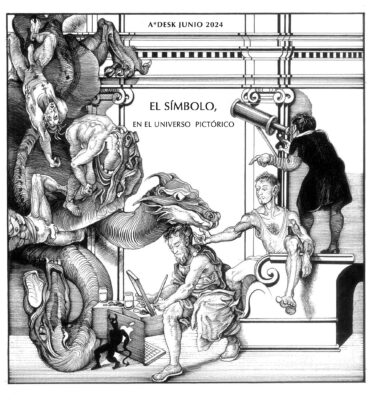Search
To search for an exact match, type the word or phrase you want in quotation marks.
A*DESK has been offering since 2002 contents about criticism and contemporary art. A*DESK has become consolidated thanks to all those who have believed in the project, all those who have followed us, debating, participating and collaborating. Many people have collaborated with A*DESK, and continue to do so. Their efforts, knowledge and belief in the project are what make it grow internationally. At A*DESK we have also generated work for over one hundred professionals in culture, from small collaborations with reviews and classes, to more prolonged and intense collaborations.
At A*DESK we believe in the need for free and universal access to culture and knowledge. We want to carry on being independent, remaining open to more ideas and opinions. If you believe in A*DESK, we need your backing to be able to continue. You can now participate in the project by supporting it. You can choose how much you want to contribute to the project.
You can decide how much you want to bring to the project.

In this month’s issue I have presented how painting is linked to the Symbol with some examples and specific symbols in four itineraries.
In the first itinerary, the symbol, a trace or visible seal of an invisible reality, was explained as a reality that exists by itself and that is captured by the artist and which passes through him and becomes visible in the painting.
In the second, we saw the harsh conditions that painting and sculpture went through in the early periods after the fall of the Roman Empire, focusing on new phenomena, such as the icon, and building a bridge between the West and the East. In this era, the status of the “image” was defined, with a decisive role played by Gregory the Great.
In the third, we used the example of another symbol, the Mandylion, the miraculous portrait of Christ, and the artist and painter Marc Badia entered into the scene to comment about it. We did not fully document the image, skipping great painters who have tested their art by emulating it, such as Van Eyck who painted a Holy Face and inscribed in Latin underneath: “As best as I could.” Marc very generously commented on it through one of his works, Credo quia absurdum, a possible self-portrait, and put it in the context of ruins, a current subject that interests him. The garden-like views and plants scattered throughout his paintings demonstrate an almost mystical botanical interest, like Bellini’s Vision of Saint Francis.
In the fourth, the biblical passage of the bronze serpent, from the text of Numbers, was used as an example. Víctor Balcells Matas was invited to do an analysis of the passage, and Karma Juliana was invited to prepare a concept. Victor spoke of a very strange book by Marie Louise Von Franz on divination, relating it to the divine symbol, and Karma extracted a visual meaning in a work she made especially for the occasion. Both pointed out two levels of visualization of this symbol: one that sees only the serpents, and another that goes to the essence and finds redemption.
These are symbols that our old continent, Europe, with a vast, splendid, and mostly painful past, interprets in different ways. This continent must create deep, healthy ties with its past, for the market place will not do this, and one must filter from history that which is most valuable, admirable and lasting: beauty.
[Featured Image: Marcel Rubio Juliana: Dibuix anunciador editorial]

Marcel Rubio Juliana (Badalona, April 27, 1991). He expresses himself mainly through painting. He is the author of the exhibitions Vastu Purusha (Racoon Projects, 2023), La resurrecció (Fundació Miró, 2022), Hieros Logos (2021) openstudio curated by Margot Cuevas, El retorn a Ripollet (Joan Prats, Art Nou 2020 award), Surfeit ( Arranz-Bravo Foundation, l’Hospitalet del Llobregat, 2018). In the literary field he created with Víctor Balcells Els músculs de Zaratustra (Passatge Studio, 2016), as well as his recent foray into the world of publishing.
"A desk is a dangerous place from which to watch the world" (John Le Carré)